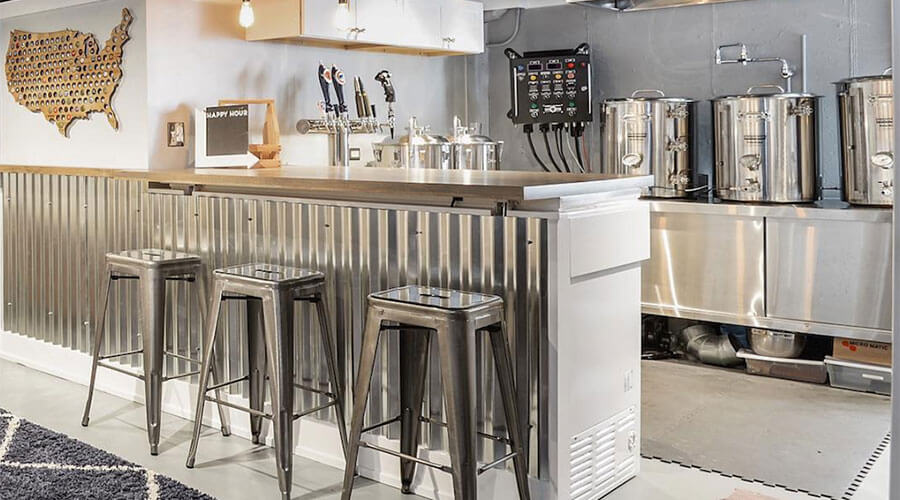August 02, 2019
7 Crucial Reasons to Keg Your Homebrew

Bottling is the worst. Seriously. Dishpan hands, dirty bottles, sticky floors, wasted beer, inexact carbonation, and endless, endless wasted time.
Life in 2018 A.D. (After Draft) is a breeze compared to 2018 B.C. (Bottle Conditioning). Here's why.
1. So. Much. Saved. Time.
Once your system is set up, instead of laboring over sixty 12 oz. bottles, start a siphon and let all 5 gallons flow right into one keg. In the time it takes to wash, sanitize, transfer and package all those bottles of beer, you could wash and sanitize your keg, fill it, carbonate it, make dinner, go outside for a run, brew another batch of beer, cure world hunger, blow your own glass bottles... you get the idea.
2. Ridiculously Easy Sanitation
Cleaning and sanitizing a keg is an absolute cinch, especially if you're good about rinsing them out thoroughly once they've been cashed. All you need is a keg washer or a simple soak in some PBW, and you're good to go.
3. Easy & Exact Carbonation
Carbonating your beer in the bottle takes a couple weeks. Carbonating in the keg takes a couple hours.
Plus, thanks to the regulator, you can easily figure out exactly how much CO2 is in your beer. No more wasting a perfectly good bottle of homebrew by opening it up, only to find it under-carbonated.
4. Dry Hopping & Secondary Additions
Secondary additions are now a breeze. Pop open the keg lid, put in a muslin bag, and put the lid back on. When the flavor hits its peak (much easier to test now that you can pour a tiny sample rather than open an entire bottle!) take off the lid, remove the bag, and put the lid back on. Boom. Done.
Throw in whatever you'd like: oak, dry hops, cacao nibs, cat food (not recommended). Feeling risky? Leave 'em in until the last drop and see how the taste profile evolves. We once kept a Bourbon Barrel Porter on tap for 9 months with oak additions still floating in there. It only got better and better.
5. Long Shelf Life & Small Samples
Since it's stored under CO2 and never exposed to oxygen, beer on tap lasts a long time. Every pour is as fresh as the first. In fact, since no light permeates your keg and no trub is left over from bottle conditioning, your beer is safer in a keg than a bottle.
At some point, all beers die of old age. But with the ability to take small samples instead of opening whole bottles, you have a much better gauge of the life cycle of your beer.
6. Secondary Fermentation
Remember that one time you wanted to brew but didn't have the carboy capacity? Well, no longer: your keg now doubles as a secondary fermenter. Siphon your beer into a keg, add a squirt of CO2 to seal the lid, and leave it in the corner to condition. This method is especially good for long-term secondaries, because there's no risk of light getting in or an airlock going dry.
(Plus, kegs are pretty indestructible. So even when you ignore the warning label on your turkey fryer, use it indoors, and accidentally burn down your house, your beer will stay safe.)
7. It's Really F%@#ing Cool

Picture this: your friends come over for drinks, and you have an actual taproom in your kitchen.
Let's face it. You'll be the shit. Your parties will be the best, and everyone will want to be your friend. Call that kid who made your life miserable in high school and tell him you keg your beer now. Instant remorse.
Want to keep reading?
How to Build a Keezer or Kegerator
